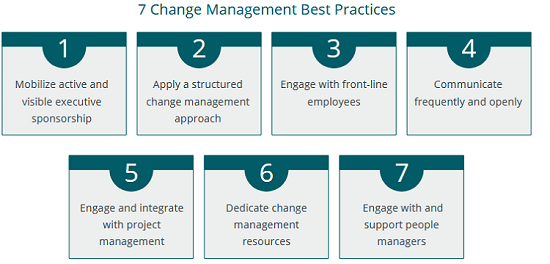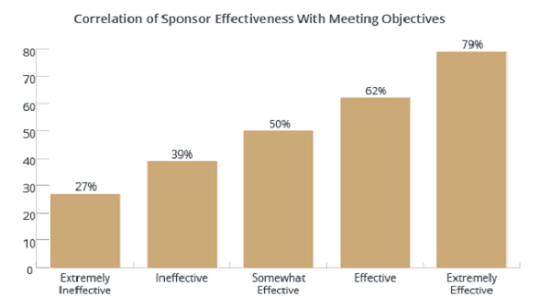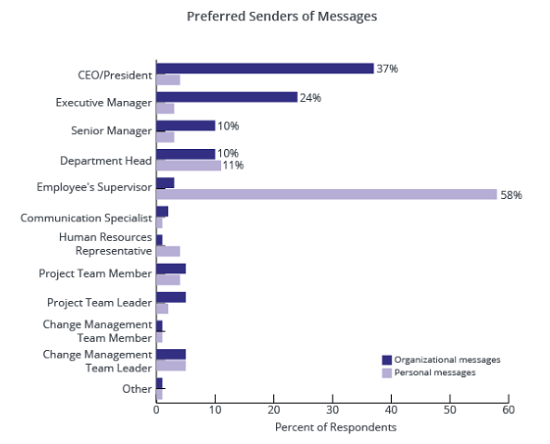Framework 159 Best Practice Change Management
Introduction
Based on surveys of change practitioners (around 40% at 9+ years of experience as change managers), Prosci has identified 7 key factors that are essential for change management bestwith practice:

(source: Prosci, 2023w)
More on the 7 best practices
1. Mobilise positive, active and visible sponsorship (this means
"...- Support the change by giving consistent attention to the change and the need for change management
- Champion the change by leading and motivating others in the organisation
- Make effective influential decisions regarding the change, including aligning priorities among other leaders in the organisation
- Remain in direct communication with the project management and the change management teams, and remain accessible during the change
- Influences and maintain support for participation in a coalition of sponsorship..."
(source: Prosci, 2023w)
The more effective change sponsorship resulted in better performance in change management, ie meeting objectives

(source: Prosci, 2023w)
2. Use a structured change management methodology (it provides guidance; check list of activities; monitors progress; helps identify and address gaps; some of the characteristics include:
"...established, customised, scalable, clear and well thought out, easy to implement across multiple changes and easy to apply at every phase of the project..."
Prosci, 2023w

(source: Prosci, 2023w)
3. Engage with all staff, especially front-line employees (aim to get the necessary buy-in/ownership of the change process by maximum number of employees, ideally at the start the process:
"...to help employees understand why the change is necessary and how it will affect them, and to equip them to transition through the process successfully...... demonstrate willingness to participate in the change and collaborate with the people leading the change..."
Prosci, 2023w
Tactics to increase engagement include:
"...- highlighting 'what's in it for me' (WIIFM)
- identifying and building relationships with impacted groups
- ensuring impacted groups receive the appropriate level of training
- involving employees in identifying and planning a proposed solution and future state..."
Prosci, 2023w
Need to allocate resources to reinforce and sustain change management objectives.)
4. Communicate frequently and openly (communication needs to have
"...cadence, consistency, transparency, leverage in multiple communication channels..."
Prosci, 2023w
The below graph shows that employees prefer to hear organisational messages about the change from senior management, while personal messages about the change need to come from their immediate supervisor.

(source: Prosci, 2023w)
5. Engage and integrate change management with project management (they are complementary disciplines that enable better performance; integration dimensions include people, processes, methodology, results and outcomes, tools and techniques, etc; some examples of integration include:
"... - adding change management activities to the project plan
- working collaboratively with the project team
- aligning change plans and dates with project plans and dates
- combining or assigning responsibilities and roles
- providing change management training to the project team..."
Prosci, 2023w)
6. Dedicate resources to change management (this means adequate funding, people, expertise, time, etc; involves accountability and responsibility)
7. Engage with and support people managers (they are closest to employees impacted by the change; this involves:
"...- Emphasising communication about the change and the managers' roles in change
- holding one-on-one meetings, team meetings and alignment sessions
- a focus on awareness building, including how the change will affect them, the business reasons for change, and the need to change
- providing materials, tools and support that will help managers understand and navigate the change
- engaging and involving managers during the early phases of the change and throughout the project life-cycle..."
Prosci, 2023w
As a group, middle management are the most resistant to change.

(source: Prosci, 2023w)
